The Camino Portugues Central was our first experience with thru-hiking. We had never done a hike that lasted more than a single day. Its proximity to Lisbon, the manageable 10-day duration, and the straightforward logistics made it an easy and practical choice for us. The 250 km distance felt intimidating at first, but as we began planning and training, it started to feel achievable.
One of our dreams is to hike the Laugavegur Trail in Iceland, but it’s much more remote and logistically complex. For our first thru-hike, we wanted something easier and closer to home to see how we would handle walking for several days in a row with a backpack.
We also considered the Camino Frances, but with an average duration of around 30 days, it just wasn’t realistic for us, especially with young kids at home. The Central Portuguese route offered the right level of challenge, fit into our schedule, and was much easier to organize.
Another reason we chose this route was how accessible it is. There is plenty of food and accommodation along the way, and we knew we would never be far from civilization if something went wrong. On a trip like this, things don’t always go as planned.
When we booked our first train tickets and accommodations, the weather looked perfect. But as our departure date got closer, the forecast changed completely. Suddenly, rain was expected every single day.
Our first stage of the Camino de Santiago Portugues would take us from Sé do Porto to a farmhouse in Gião, on the way to Vairão. Some people skip this part, but we wanted to begin in Porto to buy our pilgrim’s credential and experience the full route.
Our Camino Itinerary
Day 1: Porto Cathedral to Gião
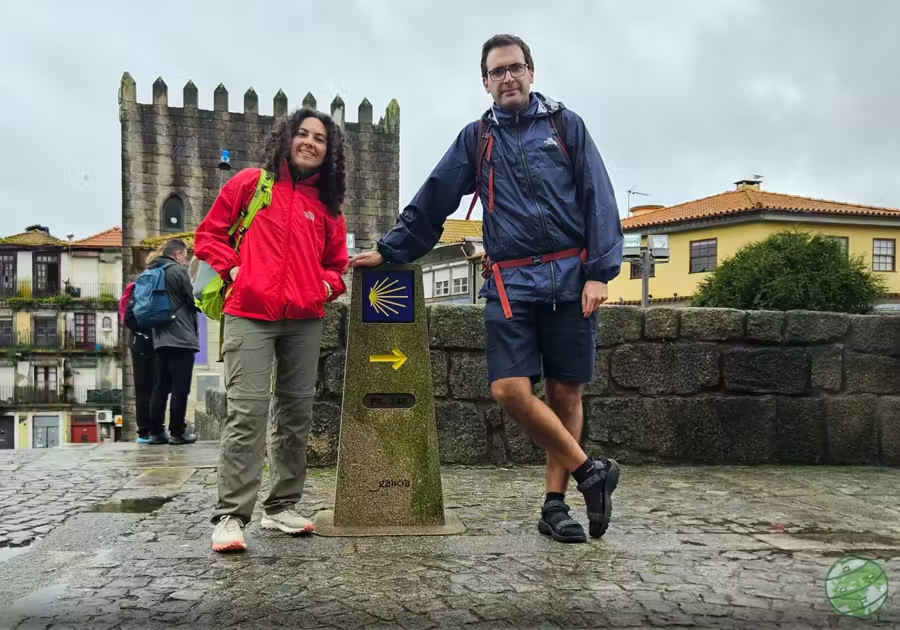
Our Camino Portugues began on April 18 with a bit of chaos. We were running late for our train from Lisbon to Porto and had to sprint through the station, backpacks bouncing, hoping we wouldn’t start our pilgrimage by missing it. Luckily, we made it just in time and settled in for the three-hour ride north. Once in Porto, we hopped on another short train to São Bento station, conveniently close to our starting point: Porto Cathedral. There, we picked up two pilgrim credentials and took a moment to snap a few photos by the first yellow arrow—the symbol that would guide us all the way to Santiago de Compostela.
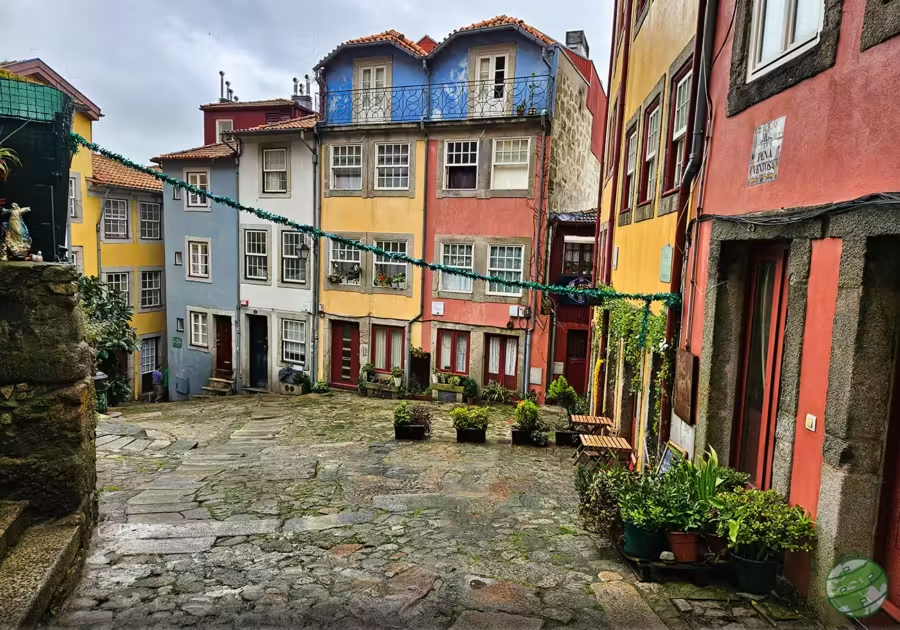
We started walking the Camino Portugues Central under a light drizzle—nothing dramatic, just enough to remind us we were in northern Portugal. The narrow, winding streets of Porto’s historic center made for a charming and memorable start. But it didn’t take long before we left that postcard scenery behind and entered the outskirts, where the views were more practical than pretty. Concrete buildings, long sidewalks, and steady traffic kept us company for much of the day.

We tried not to rush, keeping a steady pace to avoid blisters. Since this was our first thru-hike, we were nervous about how our feet and legs would hold up. Our main goal was simply to finish the day strong.
One of the most enjoyable parts was getting into the rhythm and game of spotting the next yellow arrow. It’s a great feeling to stay “in the vibe,” always alert and excited to find the next marker on the trail.
The sidewalks grew narrower the farther we moved from Porto, sometimes disappearing completely and forcing us to share the road with cars—not ideal by any means.
Our first stamp came in Gião, and it was surprisingly emotional. Holding our pilgrim credential with its first mark felt like crossing an invisible threshold—we were officially pilgrims.

We reached Casa Mindela, the charming farmhouse where we’d be spending the night, just as the weather turned. Thankfully, we made it inside moments before the worst of the rain came down. The quiet and comfort of this rural stay was exactly what we needed after our first long day on the Camino Portugues Central.
By the end of the day, according to Strava, we had covered 24.3 kilometers with about six hours of moving time. It was a challenging but unforgettable start to our Camino.
Day 2: Gião to Barcelos

Our second day began full of optimism and with a solid breakfast to fuel us. We had a big day ahead, planned at around 30 km, but we had no idea just how long and wet it would actually turn out to be.
We started by backtracking a little to take a detour through Vairão. It added about 3 km, but it allowed us to avoid a busy section of the national road, which felt like a fair trade. After Vairão, we finally got off the asphalt and into nature for the first time on the Camino Portugues Central. A peaceful forest path gave us some relief from the pavement and traffic. It felt like we were starting to leave civilization behind and truly entering the rhythm of the trail.
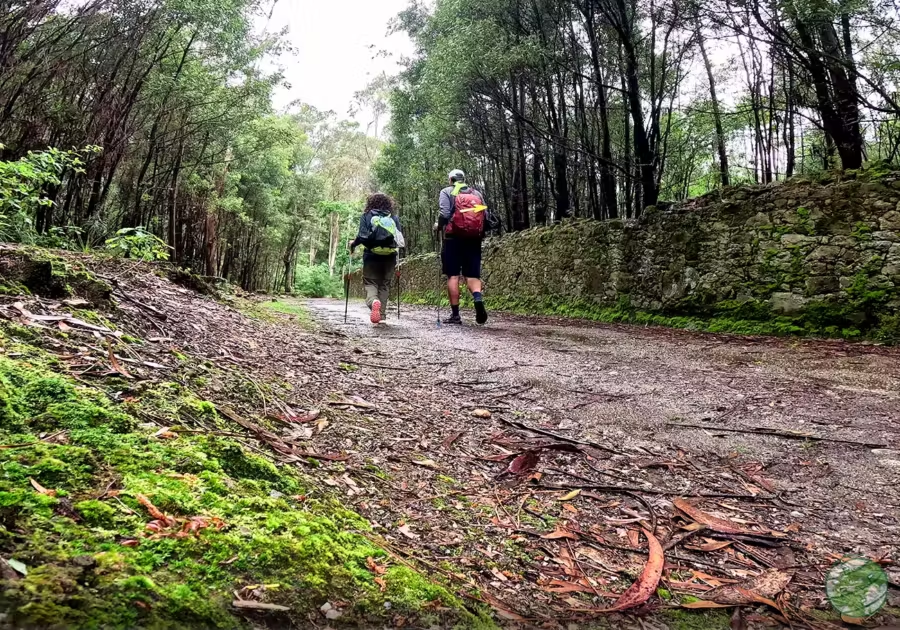
Along the way, we passed several small Roman bridges that gave the day an extra charm. These unexpected historic spots kept the walk interesting and helped take our minds off the growing discomfort from the rain.

Later in the day, we had to make a choice: continue along the national road or follow an alternate path through old villages and agricultural access roads. We picked the quieter route, even though it added another 2 km. It was the right call for the experience, but it definitely stretched our legs more than expected.
Then came the rain. First a drizzle, then a steady downpour, and eventually hail. We were lucky to find Quinta D. Curado just in time—a great little restaurant right on the Camino that offered a daily menu at a fair price. We felt like we’d dodged a bullet.
After lunch, the rain didn’t let up. We kept walking, and at one point in São Pedro de Rates, I noticed my toes felt hot. I stopped to check and found my first blisters. Not great, but manageable. I applied some hiker’s wool and it made a big difference.

Later, we passed a giant Rooster of Barcelos sculpture and, for a moment, thought we were almost there. Then came the sign: “Barcelos — 14 km.” That stung.
From there, everything turned into a muddy mess. The trails were soaked, puddles everywhere, and our soaked shoes made squishing noises with every step. We were exhausted, wet, and just wanted the day to end.
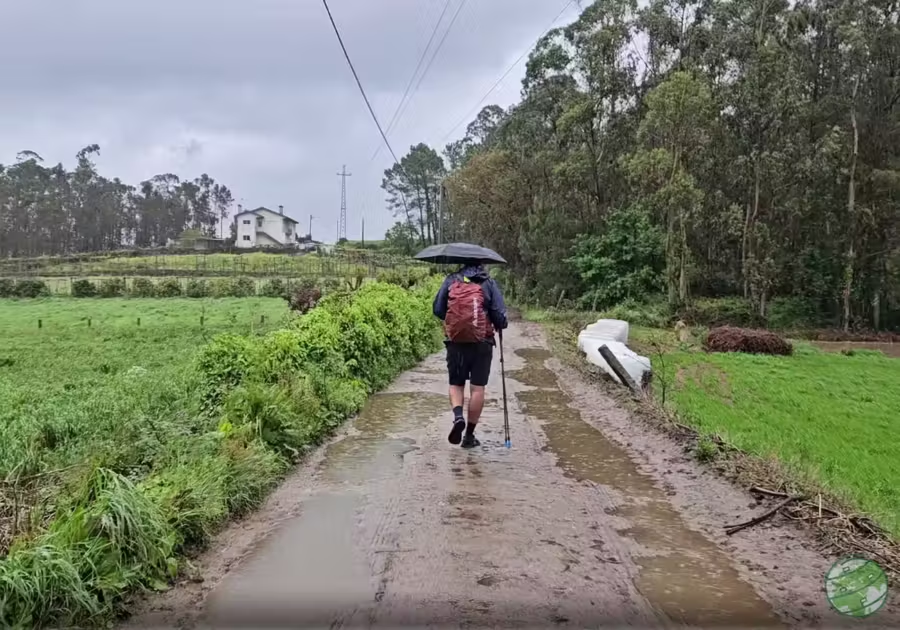
Before reaching Barcelos, we crossed a special milestone: less than 200 km to Santiago de Compostela. It was a small but powerful moment that lifted our spirits, reminding us how far we’d come and how close we were to our goal.

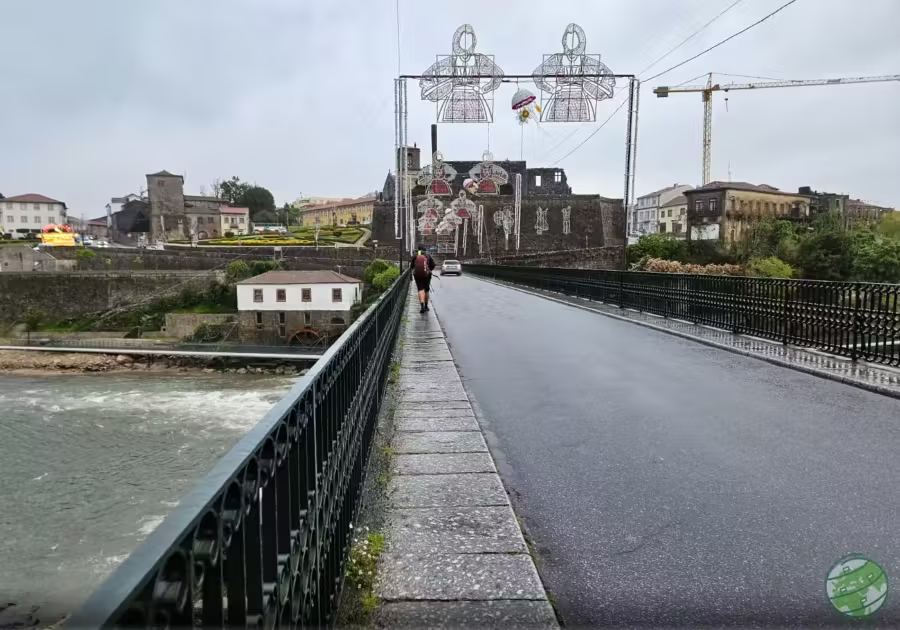
Eventually, we arrived in Barcelos completely drained. We were staying at the Flag Hotel, and even then, we still had to wash our clothes, try to dry our shoes, and get enough rest to keep going. For dinner, we went straight to the nearest McDonald’s, eager for something hot and comforting. Then we headed to bed, hoping our clothes would be dry by morning.
It was one of the hardest and wettest days we’ve ever had on a trip, but it’s also the kind of day you never forget.
According to Strava, we ended up walking 36 km in just over 8h30 of moving time.
Day 3: Barcelos to Ponte de Lima
We started our third day already feeling drained. After a late night, only getting to sleep around midnight, we woke up tired and sore. Our original plan was to walk the full 35 km to Ponte de Lima, but with more rain in the forecast and fatigue setting in, we decided it was smarter to take it easy. Pushing ourselves too hard could have put the rest of the Camino at risk.
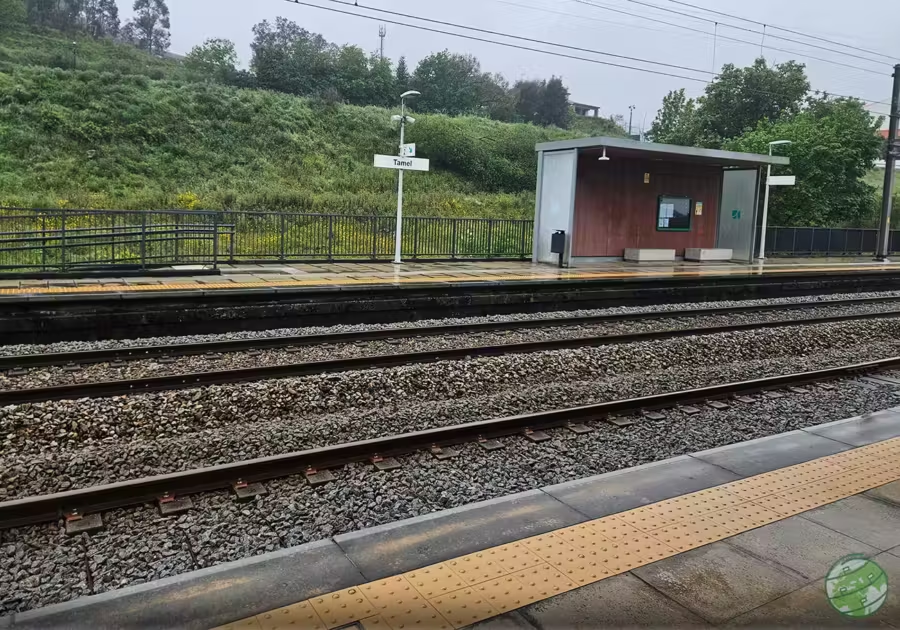
We chose to shorten the day by taking a train part of the way. Although the station is called Tamel, it’s actually located in Aborim, and it’s just a short 200-meter walk to reconnect with the Camino Portugues Central. The convenience made our decision even easier.
The day was mostly rainy, but the rain stayed light and steady. We moved through farmland, quiet rural roads, and some scenic countryside. It felt good to be walking again, but at a more forgiving pace.

Along the way, we passed a few cafés and roadside stops. Some offered food and drinks, and others had stamps for our pilgrim credentials. A few asked for a small fee, while others simply had a donation box. These little encounters always lifted our spirits and reminded us of the kindness that defines the Camino.
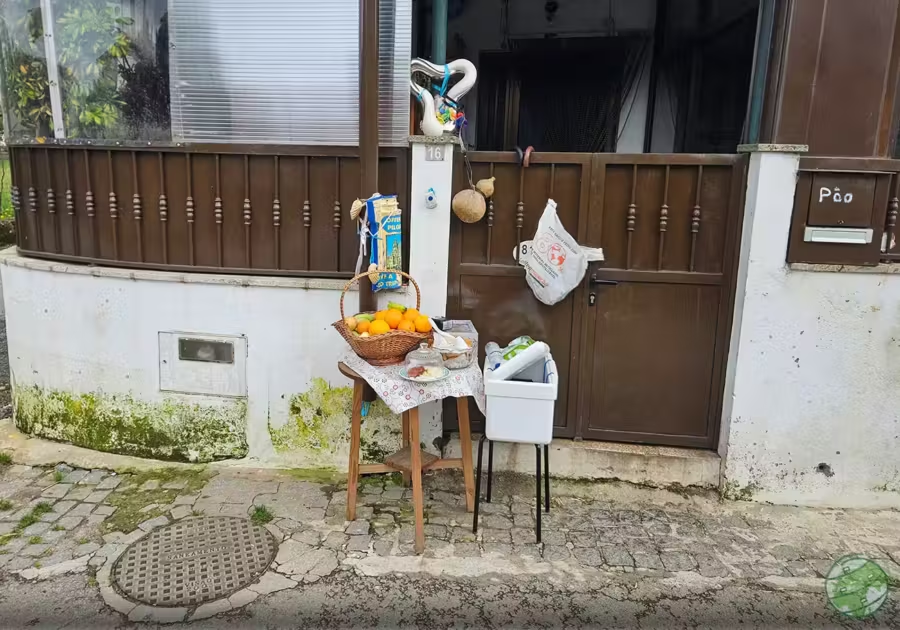

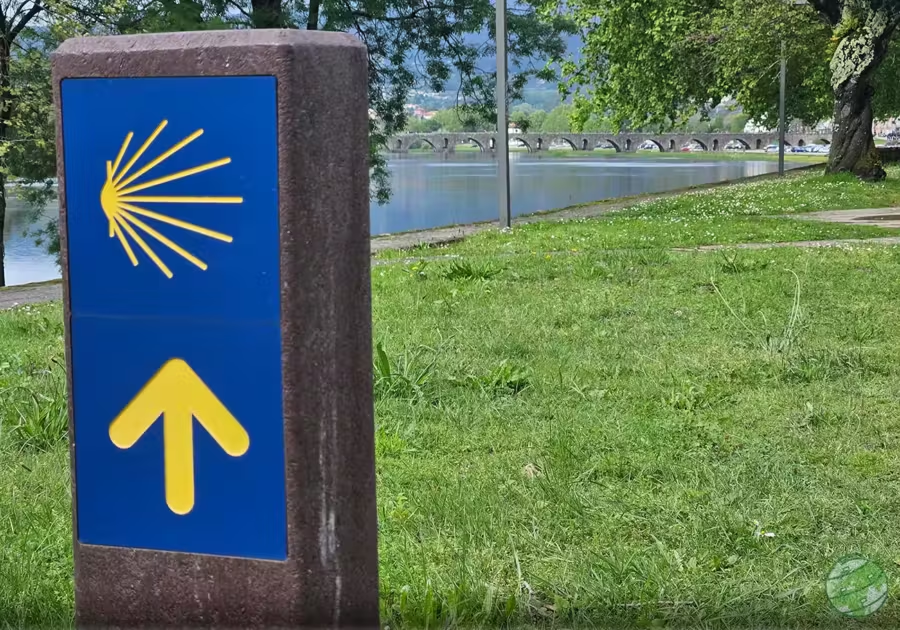
We reached Ponte de Lima by 5 p.m. with enough time to snap a few photos of the beautiful old bridge and the riverside before checking into the Pousada da Juventude. After a hot shower and some time to relax our feet, I started feeling some stomach discomfort. It wasn’t foot pain this time, but rather digestion issues that left me worried about how I’d handle the technical climb the next day.
In the end, instead of walking the full 35 km we had planned, we ended up doing around 23 km and spent 5h40 moving. It was the right call.
Day 4: Ponte de Lima to Rubiães
Our fourth day on the Camino Portugues Central was all about the mountain. The stage from Ponte de Lima to Rubiães is often considered the most technical and difficult of the Portuguese route, and it definitely lived up to the reputation.
I woke up still feeling tired but better than the night before. I managed to have a yogurt and some tea for breakfast, which helped ease me into the day. The weather was also supposed to improve, finally giving us a break.

After crossing the Lima River, we quickly found the results of the previous days of rain: the Camino was partially flooded. Thankfully, we had packed a few trash bags just in case—and they came in clutch. We slipped them over our shoes and made it through the worst of the water and mud without too much trouble. One stretch was especially muddy, but a small stream right after gave us the perfect chance to wash our shoes. “The Camino provides,” I thought. Unfortunately, one of the bags ripped, and I ended up with a completely soaked sock.

Once past the mud, the trail flattened out with some great views. But we knew that as soon as we crossed the highway, the climb would start. I had doubts about how my body would handle it, but to my surprise, I managed it well.
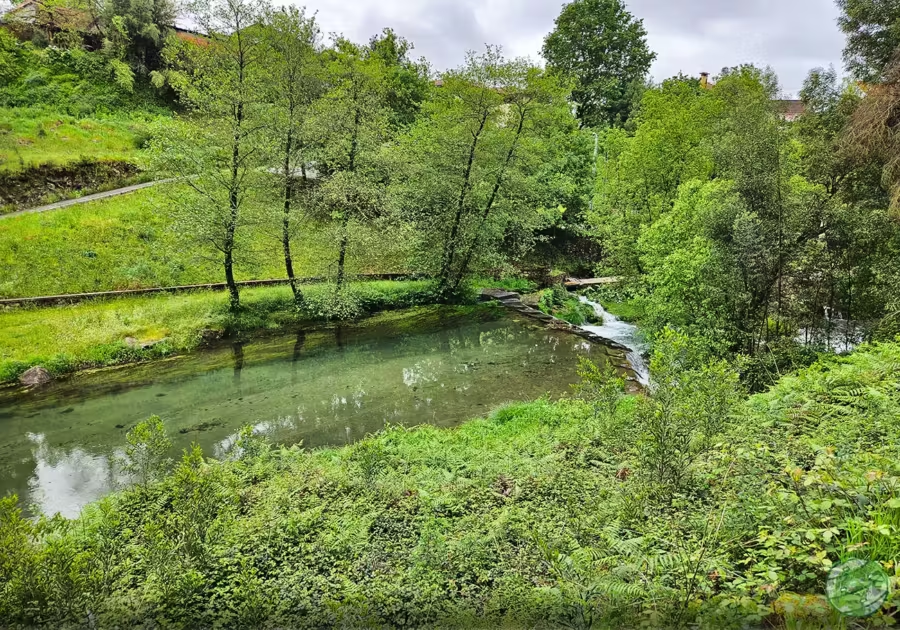

The incline up the Labruja mountain was tough, but manageable, and along the way we reached the French Cross, where tradition says you should leave a stone brought from home. Dropping ours felt symbolic, like we were leaving some weight behind and moving forward lighter.
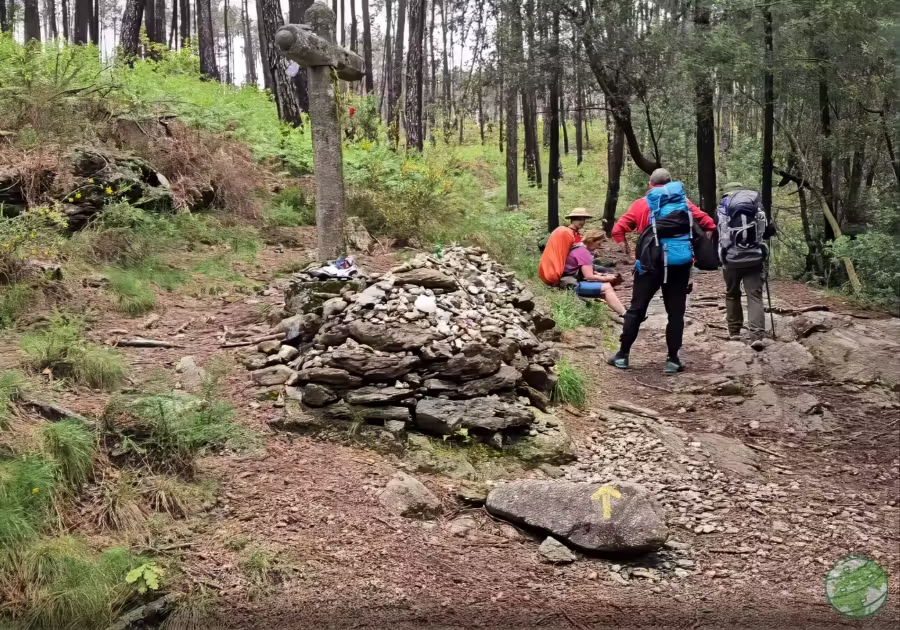
From this point on, we noticed a clear shift: more and more pilgrims started appearing along the trail. It felt like we were truly entering the heart of the Camino community.
Although we expected this to be the hardest day because of the climb up Labruja, we still agreed that day two—with its relentless rain, detours, and 35 km—had been the most difficult so far. According to Strava, we did 19 km with 550 meters of elevation gain. There was the option to go all the way to Valença, but that would have been too much. Splitting the stage was the right call.
Just before reaching our accommodation, we stumbled across a small food trailer that served some well-timed afternoon snacks—a perfect boost after the tough descent.
We arrived at Pensão Repouso Peregrino feeling accomplished. The pensão was quite isolated, with no restaurants or shops nearby, but it offered a free shuttle service to a nearby restaurant with a solid pilgrim menu. Dinner was warm, filling, and just what we needed to recharge. We also met a few fellow pilgrims staying there, and it was great to share that growing sense of community on the Camino.
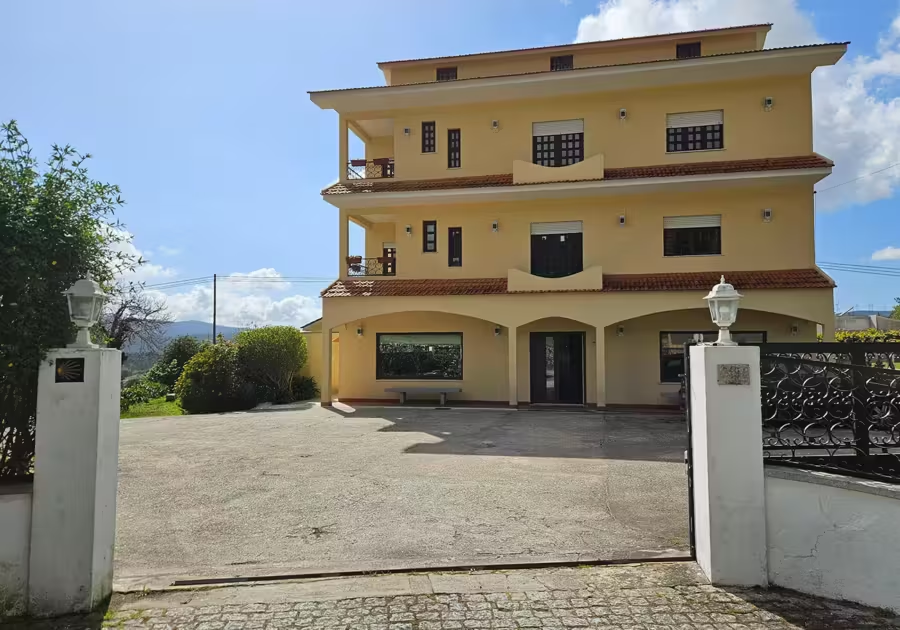
Day 5: Rubiães to Valença
Our fifth day on the Camino Portugues Central marked our final stretch in Portugal. We were heading to Valença, and instead of taking a full rest day, we opted for a shorter and more relaxed stage—around 18 km. It was the perfect compromise to give our legs a break while still making progress.
We started the day with a great breakfast included at the Pensão, and the weather had finally turned in our favor: sunny, warm, and dry. The umbrella, after days of hard work, got a well-earned rest.
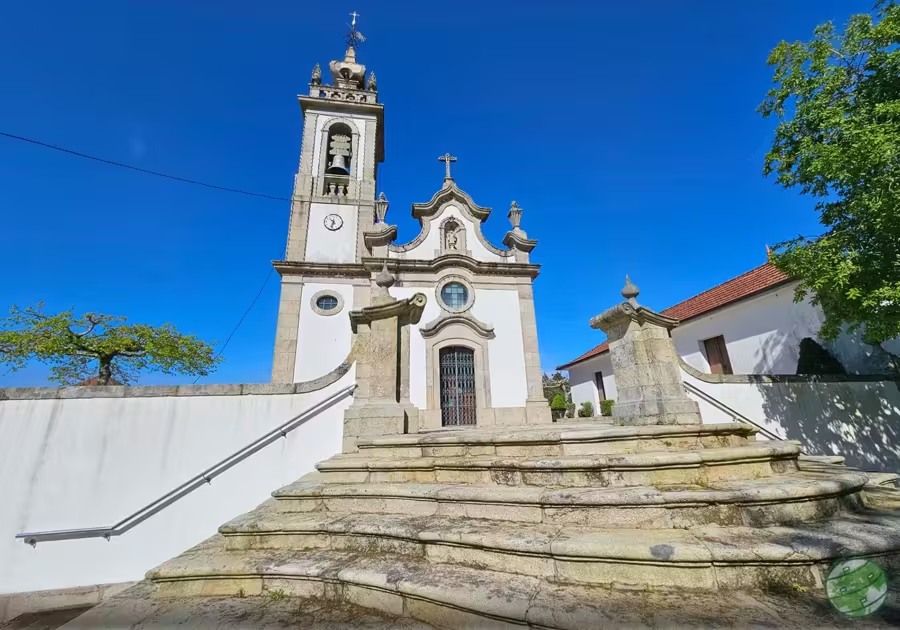
The path offered some beautiful landscapes, and much of the day was spent walking along an old via romana, surrounded by greenery and stonework that hinted at centuries of history. It was one of those days that felt easy and rewarding, where the kilometers seemed to pass without effort.
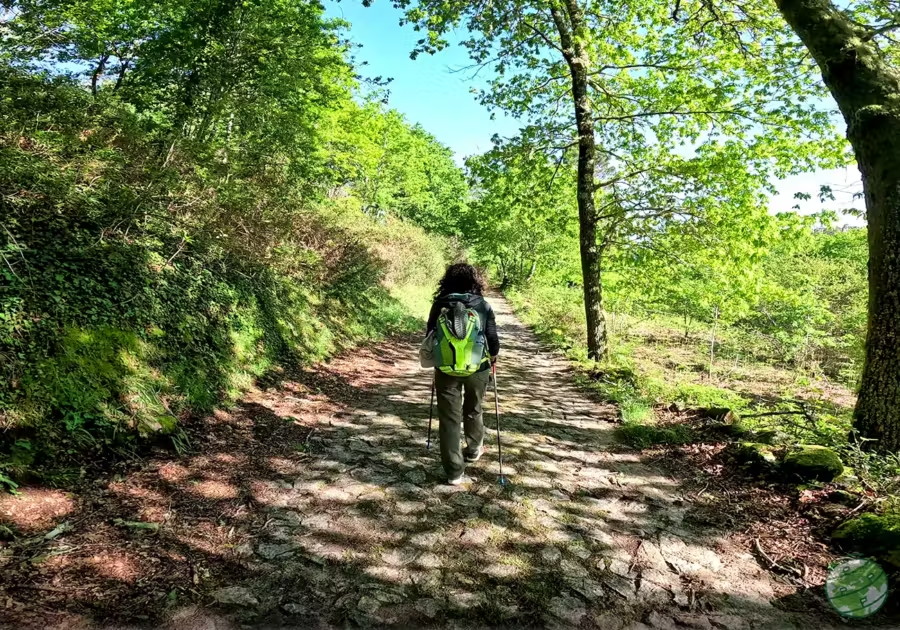
We reached Hotel Val Flores around 14:00 and had the whole afternoon to unwind. After checking in and freshening up, we headed out to explore the Fortaleza de Valença.

This stunning hilltop fortress still houses the charming old town. Strolling through the narrow cobbled streets, with views over the Minho River and across to Spain, felt like the perfect way to end our time in Portugal.
We were rested, fed, and recharged. Tomorrow we would cross the border into Spain, officially reaching the halfway point of our Camino.
Day 6: Valença to Padron de Redondela
Day six marked a big milestone—we were finally crossing into Spain. We woke up early for the 27 km stretch ahead, determined to catch the sunrise as we crossed the bridge over the Minho River. And we did. The first light of day lit up the water, and walking into Spain under that glow was a beautiful and memorable way to start the day.

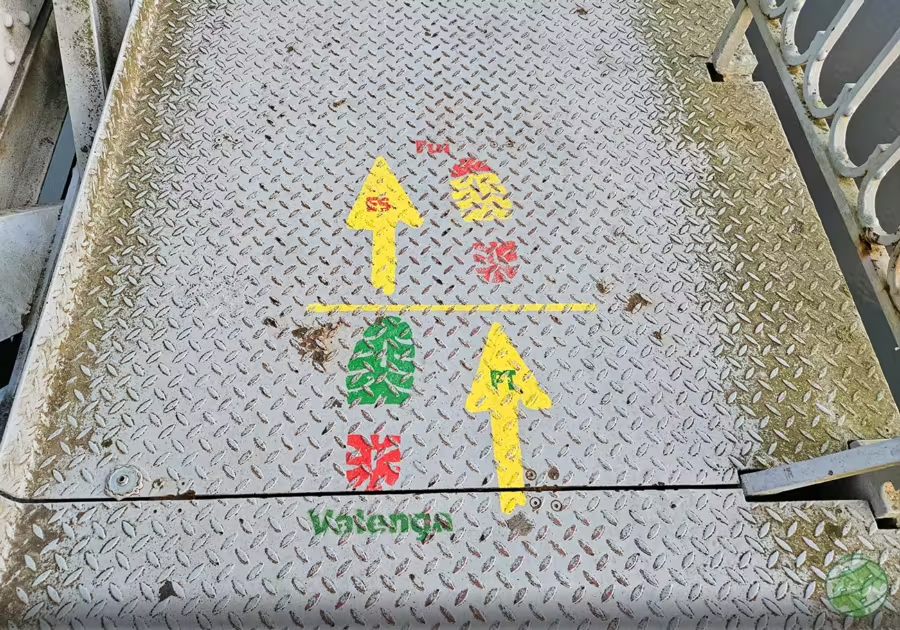
We climbed to the top of Tui, and the shift was immediate—not just the country, but the Camino itself. The number of pilgrims multiplied, and from that point on, we were never really alone on the trail again.

Soon after, we faced our second split in the route. We opted for the left-hand detour to avoid the industrial area, and we were glad we did. It offered more nature, quiet, and a softer rhythm. The trail eventually led us to O Porriño, where we stopped for lunch.
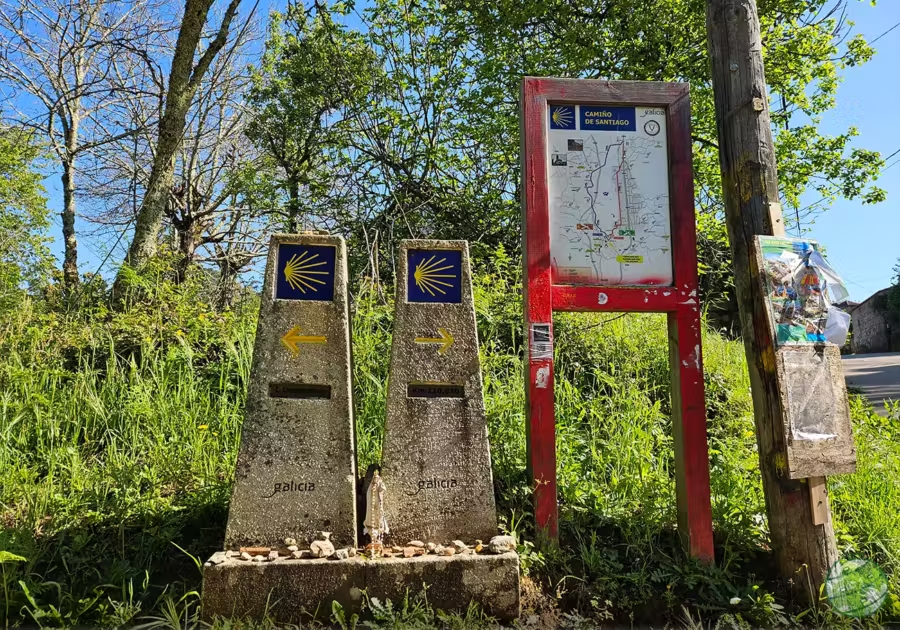

After the break, we expected to cross the 99 km marker fairly soon—but the Camino had other plans. We kept walking… and walking… and still no sign. Other pilgrims around us were also commenting on how far it seemed. When the marker finally appeared, it was a bit of a relief, but it definitely came much later than expected.

The afternoon stretch brought us more asphalt and a tough climb, followed by a long downhill that, even with walking sticks, proved harder than the uphill. By the time we reached Padron de Redondela, our total distance for the day had reached 32 km—much more than we had planned.
We stayed at Albergue O Corisco, just before the center of town, which turned out to be a perfect location to end the day. Tired but satisfied, we were now solidly into the final 100 km of the Camino Portugues Central.
Day 7: Padron de Redondela to Pontevedra
We woke up early on the 7th day of our Camino Portugués Central, aiming to arrive in Pontevedra with enough time to explore the city. But first, we had to cover the last 2 km to Redondela. From this point on, with less than 100 km to Santiago, we needed to collect two stamps per day on our pilgrim credentials.
We set off at sunrise, well rested and greeted again by clear skies. The number of pilgrims on the Camino continued to grow, creating a lively but still peaceful atmosphere. The day was a scenic one, offering views over the Ría de Vigo and leading us through a mix of historic towns and woodland paths.
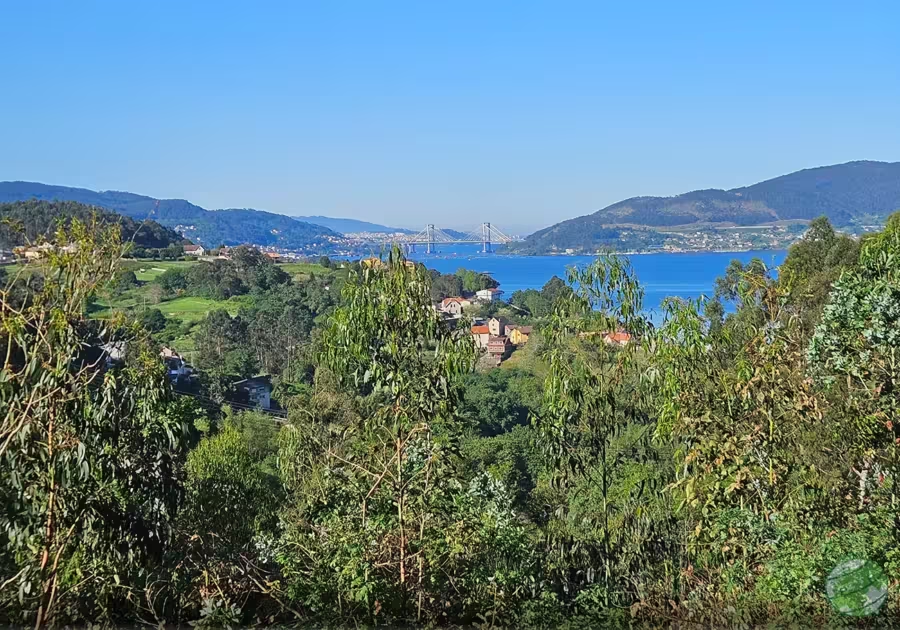
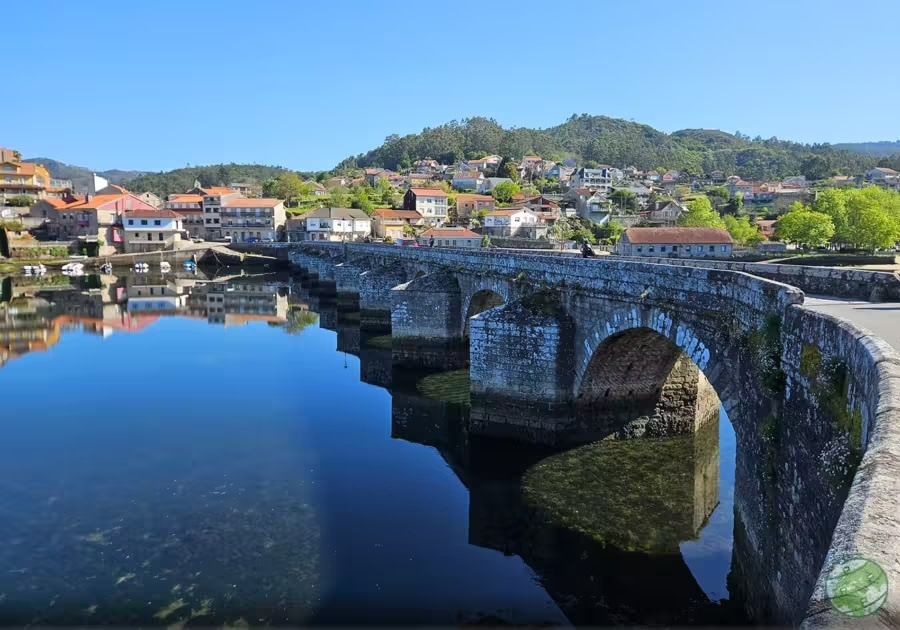
The terrain got tougher as we climbed toward Cacheiro, but reaching the top we were rewarded with a food truck serving cold drinks—just what we needed to cool down and take a breather. Even though we still had a good stretch to go, we were feeling strong and in high spirits.
As we moved closer to Pontevedra, the Camino took on a more festive, almost playful atmosphere. There were stalls selling handmade souvenirs, people singing or playing guitar, and plenty of cheerful conversations echoing along the path. Just before Pontevedra, we followed the riverside variant, where many pilgrims were relaxing by the water. We stopped briefly as well, dipping our feet into the stream—one of those small, perfect moments that stick with you.
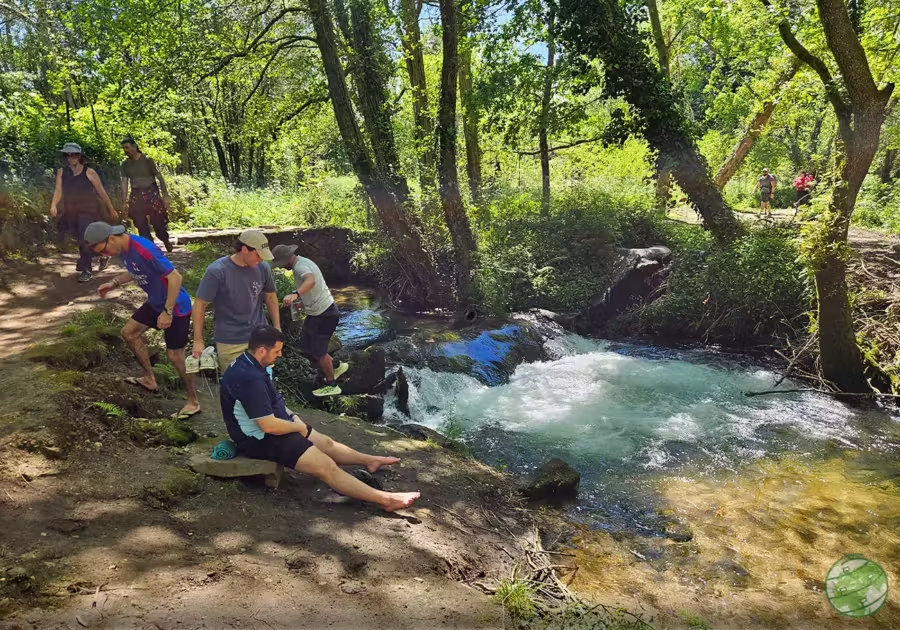
We arrived in Pontevedra around lunchtime, having walked about 24 km according to Strava. We were feeling surprisingly fresh and treated ourselves to a hearty meal. We stayed at Hotel Alda Estación Pontevedra, conveniently close to the train station. While there, we tried to book train tickets from Santiago de Compostela to Vigo, but most of the desirable time slots were fully booked. In the end, we decided to go with Flixbus instead.

The rest of the afternoon was spent wandering the beautiful, pedestrian-friendly old town, soaking in the atmosphere and reflecting on how far we’d come. It felt like we were hitting our stride physically and mentally, and that gave us a quiet confidence about the days still ahead.
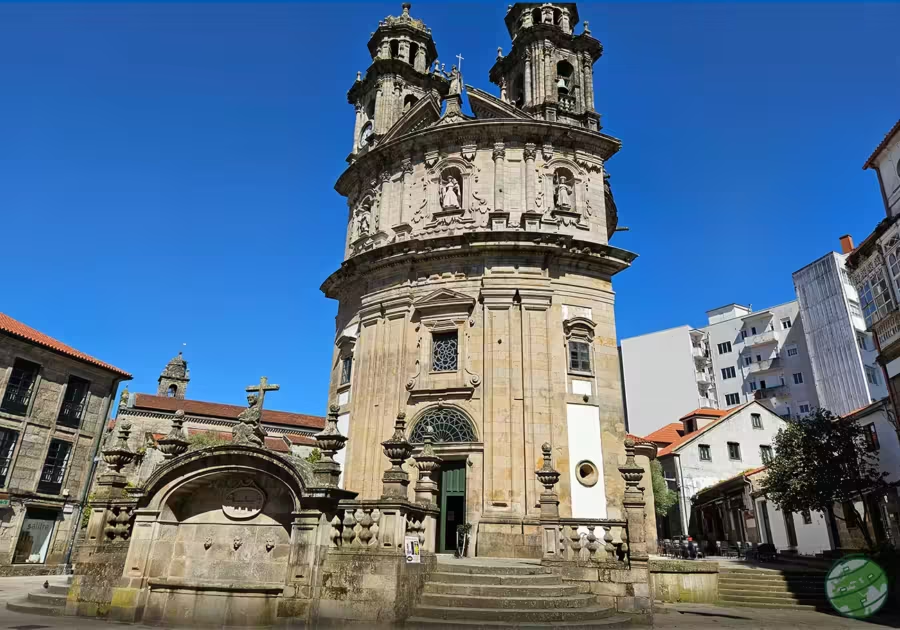
If there’s one stage where arriving early really pays off, it’s this one. With time and energy to spare, we got to visit some of Pontevedra’s highlights: the iconic Church of the Pilgrim Virgin, the Gothic-style Basilica of Saint Mary Major, and the atmospheric San Domingos Ruins.
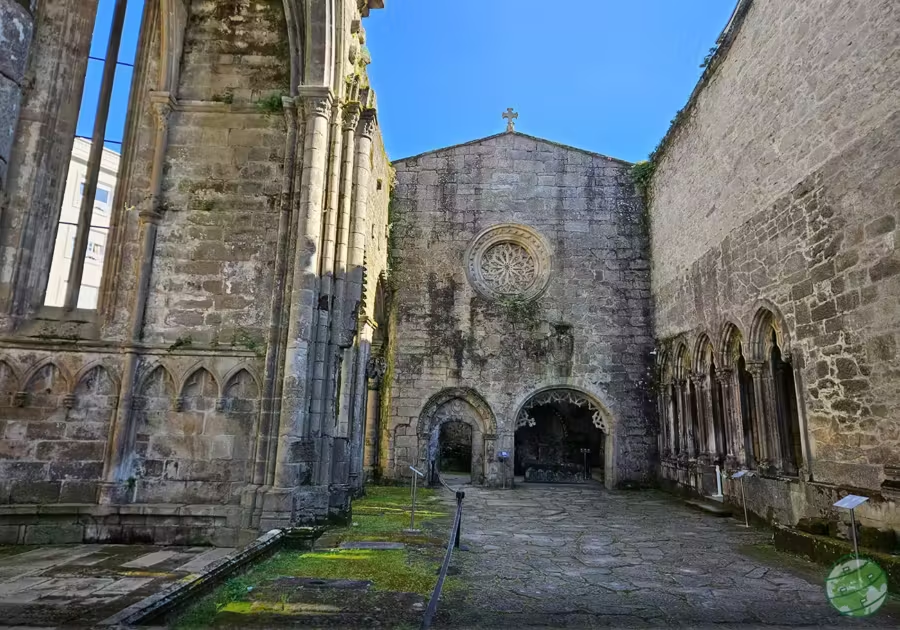
It was also the perfect place to slow down, try a few tapas, and simply enjoy the rhythm of Camino life in one of Galicia’s most charming cities.
Day 8: Pontevedra to Caldas de Reis
The 8th day marked the moment we started to feel the end of our Camino Portugues Central approaching. As usual, we woke up early—this time with the goal of reaching Caldas de Reis with enough time to explore the town.
We had about 23 km ahead of us, which meant around 5 hours of walking. At this point in the journey, that felt well within reach. In fact, by now, we were confident we could handle 30 km days without much trouble. The weather had shifted slightly not as sunny as the previous days, but in a good way. It was cooler, more comfortable for walking, and best of all, completely dry.
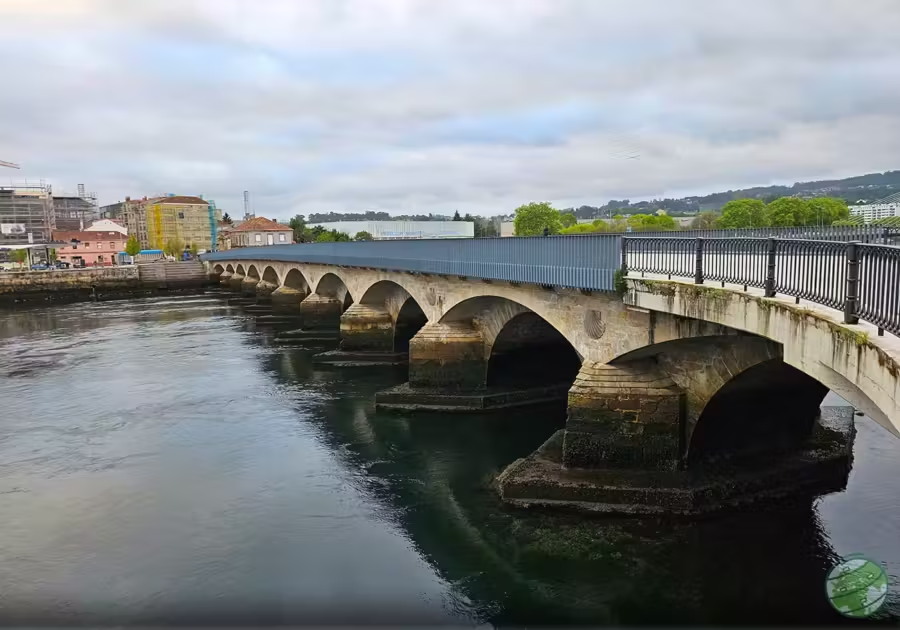
We left the hotel and made our way toward the Burgo Bridge, where we had been told to look out for the small Camino shells embedded in the stone sides of the bridge—an easy detail to miss, but a beautiful one for those paying attention.
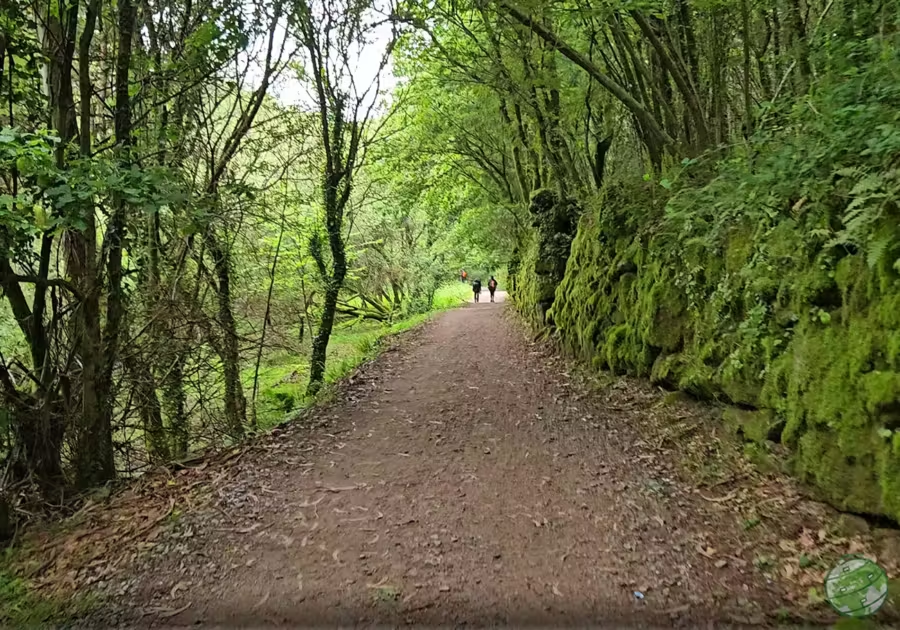
The day’s walk was pleasant, passing through peaceful countryside and several small towns. We also stopped by a few churches that offered pilgrim stamps along the way, a tradition that had become part of our daily rhythm.

We arrived in Caldas de Reis around 14:00, just in time for a pilgrim menu lunch at restaurant O Encanto. It wasn’t the cheapest spot, but the two-course meal was hearty and gave us the boost we needed. After lunch, we wandered through the town, took in the relaxed atmosphere, and even dipped our feet in the public thermal pools—one of Caldas’ unique little pilgrim pleasures.
We ended the day at Pensión Augas Quentes, a cozy and comfortable place to rest, right in the heart of town. It was a great spot to unwind before the final stretch of our Camino.
Day 9: Caldas de Reis to Padrón
With fewer than 50 km to go, the end was officially in sight. We woke up with a mix of excitement and disbelief—it was hard to imagine that our Camino was almost over. Just like the days before, we had around 20 km planned, and it was expected to be an easy walk. At this point, the kilometers no longer felt intimidating.
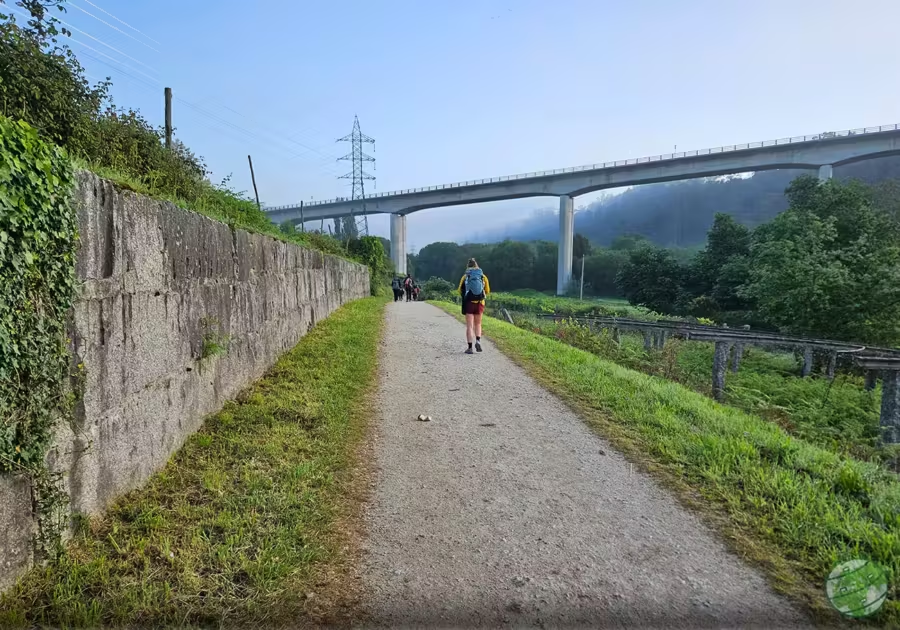
As the routes merged, the Camino became noticeably busier. The stream of pilgrims had grown into a full-on crowd. You could feel the momentum building—every step seemed to carry more energy, more anticipation. People were smiling more, chatting more, sharing stories as we all moved toward a common goal.
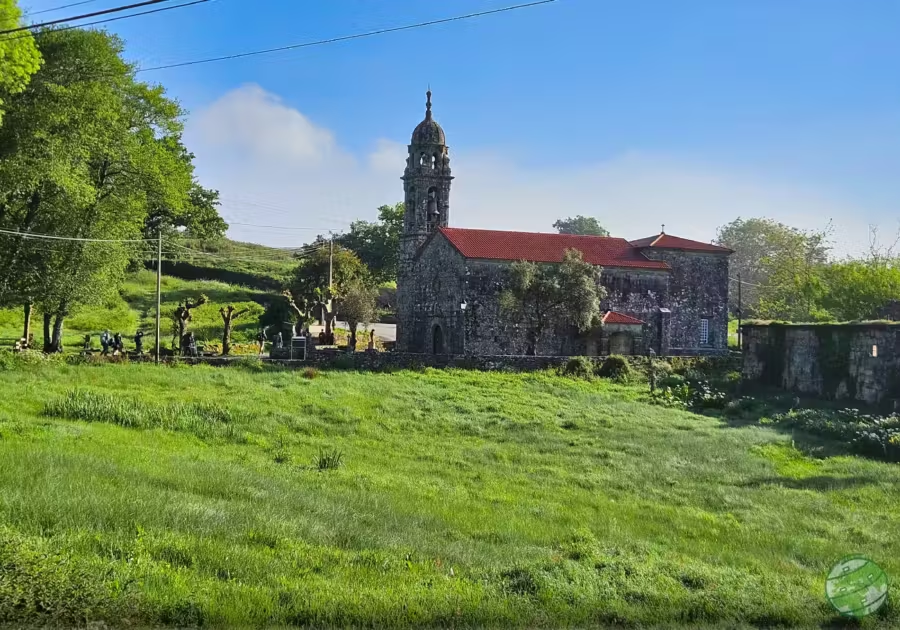
The stage itself was one of the less remarkable ones in terms of scenery. There were fewer forests and shaded paths, replaced mostly by dirt roads, small towns, and commercial stretches. But in a way, it didn’t matter. Our focus had shifted. The beauty now came from within the journey itself—the rhythm of our footsteps, the companionship of strangers, and the growing awareness that we were about to finish something big.

We arrived in Padrón by early afternoon and checked into Hotel Chef Rivera, a great little spot close to the historic center with excellent value for money. After settling in, we took some time to relax and walk around the town, soaking in the calm before the final push.
Tomorrow, we’d reach Santiago.
Day 10: Padrón to Santiago de Compostela
It finally arrived. April 27. Our tenth and final day on the Camino Portugues Central. After hundreds of yellow arrows, countless steps, muddy paths, uphill battles, and unforgettable moments, we were about to finish our pilgrimage.
We woke up early, full of anticipation. Today we would finally reach Santiago de Compostela and pick up our well-earned Compostela. It was going to be a long and warm day, close to 27 kilometers, but nothing could bring down our energy.
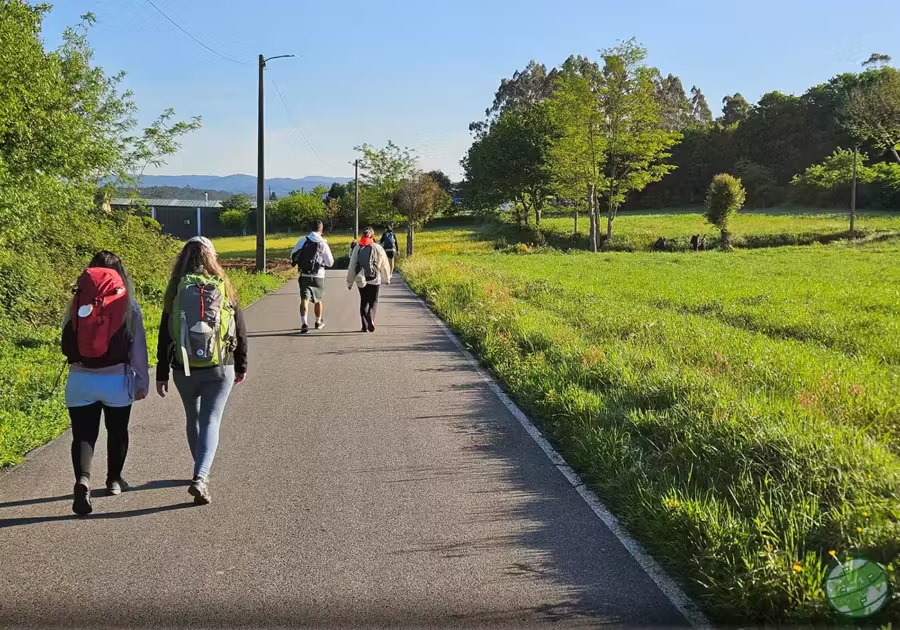
With every stone marker we passed, our excitement grew. Twenty kilometers. Ten. Then five. Somewhere along the way, at a souvenir stand, we were told that if we looked carefully, we could spot the top of the cathedral in the distance. It was small and far, but magical. We were getting close.
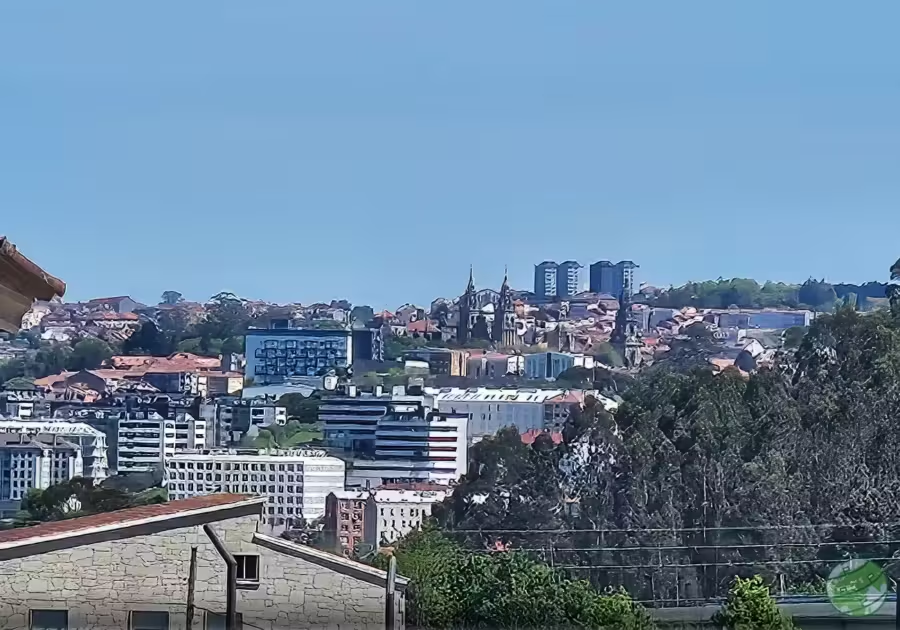
Since our bus back was only at 19:10, we decided to enjoy a proper lunch in Milladoiro. We chose huevos rotos con jamón (broken eggs with ham), and it felt like the perfect way to celebrate how far we had come.

After lunch, we kept going. The last stretch was tough. We chose the left fork again at the final split. Santiago was nearby, but the sun made each step feel longer. The historic center seemed to be just around the corner forever. But we kept walking.

At 15:00, we finally made it. We reached the Cathedral of Santiago de Compostela. After around 250 kilometers, we had completed the Camino. We were tired, but incredibly happy. We took photos, rested in the plaza, and just let the moment sink in.
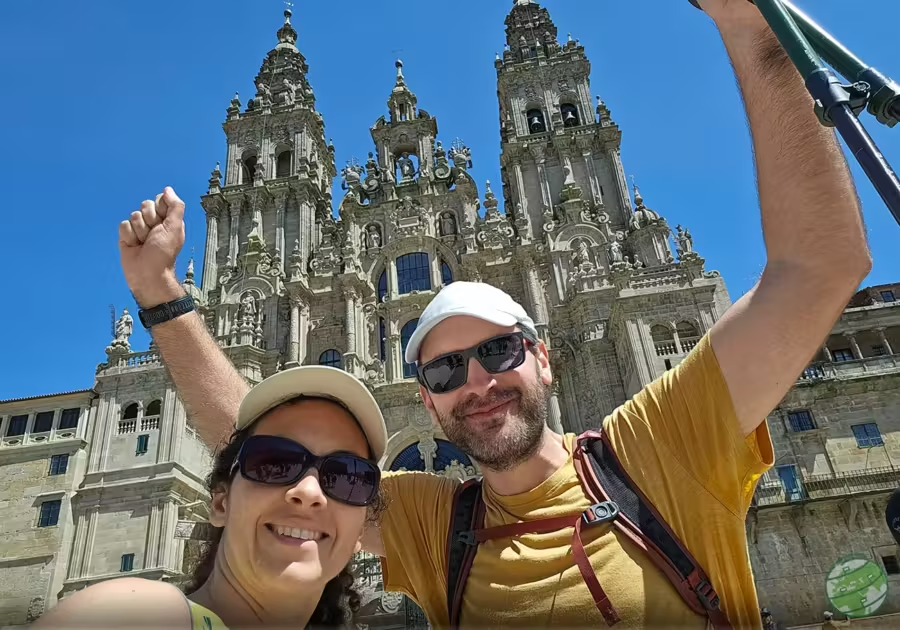
Since we had registered online (you can and should register here), getting our Compostelas was fast. Just a few minutes later, we were holding them in our hands.
The rest of the afternoon was spent exploring the historic center. We visited the cathedral, touched the statue of Saint James, and entered the crypt. We even ran into some fellow pilgrims we had met along the way. It was a special ending to an unforgettable journey.
After everything, we said goodbye to Santiago and made our way to Vigo where we would spend the night. It was time to rest and start thinking about going home.
What could possibly go wrong now?
Well, the next morning there was a blackout across Portugal and Spain.
But that is a story for another time.

